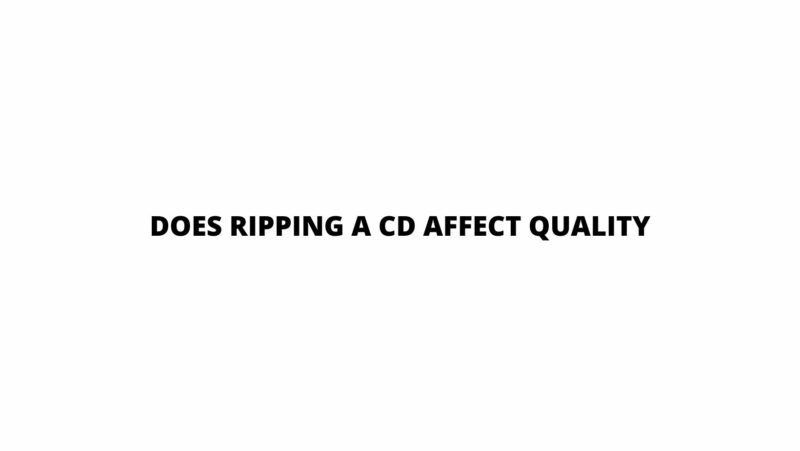As the digital era continues to reshape the way we interact with music, the process of ripping audio CDs to create digital copies has become increasingly prevalent. However, a lingering concern among audiophiles and music enthusiasts is whether ripping a CD affects the quality of the audio. In this comprehensive exploration, we will delve into the nuances of CD ripping and assess its potential impact on audio quality.
**1. Understanding Audio Quality: Before delving into the effects of CD ripping, it’s essential to comprehend what constitutes audio quality. Audio quality refers to the fidelity with which sound is reproduced and perceived. Factors such as frequency response, dynamic range, clarity, and absence of distortion contribute to a high-quality audio experience.
**2. Lossless vs. Lossy Compression: One of the primary decisions to make when ripping a CD is choosing between lossless and lossy compression formats. Lossless formats, like FLAC (Free Lossless Audio Codec), preserve the original audio quality without any loss of data. On the other hand, lossy formats, like MP3 and AAC, apply compression algorithms that remove some audio data to reduce file sizes. This compression can potentially result in a subtle loss of audio quality.
**3. Lossless Ripping and Audio Quality: When ripping a CD using a lossless compression format like FLAC, the resulting digital copy retains the exact audio data found on the original CD. This means that the audio quality of the ripped copy is indistinguishable from that of the CD itself. Lossless ripping ensures that every nuance, detail, and subtlety of the music is preserved, offering audiophiles a high-fidelity listening experience.
**4. Lossy Compression and Perceptual Coding: In the case of lossy compression formats such as MP3, a trade-off between file size and audio quality occurs. These formats use perceptual coding techniques to remove audio data that is considered less audible to the human ear. The goal is to achieve substantial compression while minimizing the perceptual impact on the listener. While modern lossy codecs have made significant advancements, there is still a compromise in audio quality, particularly at lower bit rates.
**5. Bit Rates and Audio Quality: For lossy formats like MP3, the choice of bit rate plays a crucial role in determining audio quality. Higher bit rates result in better audio fidelity by preserving more audio data during the compression process. However, higher bit rates also lead to larger file sizes. Balancing bit rate and file size is essential to ensure that the perceptual difference in audio quality is negligible for most listeners.
**6. Subjective Listening Tests: The impact of CD ripping on audio quality is often subject to individual perception. While some listeners may detect differences between a CD and a lossless digital copy, others might not notice any discernible variance. Listening tests involving trained listeners often reveal that the differences between lossless and high-bit-rate lossy formats are subtle and not easily distinguishable in typical listening environments.
**7. Considerations for Audiophiles: Audiophiles, who are particularly sensitive to minute changes in audio quality, may opt for lossless ripping to ensure the utmost fidelity. Lossless formats provide peace of mind for those who want a faithful reproduction of the original CD’s audio. However, it’s worth noting that the quality of audio equipment, listening environment, and personal preferences all contribute to how noticeable any potential differences may be.
**8. Real-World Applications: In real-world scenarios, factors like the quality of the original recording, the mastering process, and the playback equipment often have a more significant impact on perceived audio quality than the act of CD ripping itself. Well-mastered recordings are more likely to preserve their audio quality across different formats.
Conclusion: In conclusion, the impact of CD ripping on audio quality depends on several factors, including the compression format chosen, the bit rate used, the listener’s perception, and the overall audio ecosystem. Lossless formats like FLAC maintain the original audio quality, while lossy formats like MP3 involve a balance between compression and audio fidelity. For most listeners, especially in typical listening environments, the differences between well-ripped lossless and high-bit-rate lossy formats are subtle. Ultimately, the choice of CD ripping format should align with your preferences and requirements, ensuring that you continue to enjoy your music with the level of quality that resonates with you.


